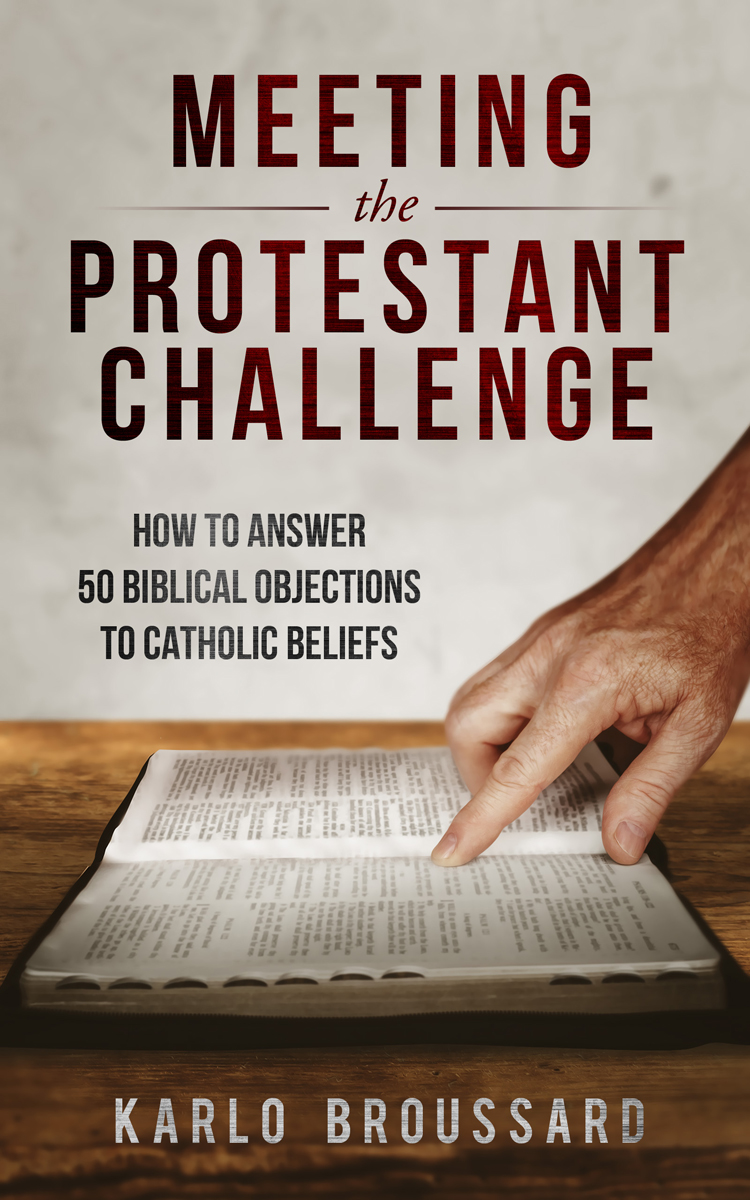“You shall not make for yourself an image in the form of anything in heaven above or on the earth beneath or in the waters below. You shall not bow down to them or worship them; for I, the Lord your God, am a jealous God, punishing the children for the sin of the parents to the third and fourth generation of those who hate me, 6 but showing love to a thousand generations of those who love me and keep my commandments.” –Ex 20:4-6
The Synod of Bishops for the Pan-Amazon region (commonly referred to as the Amazon synod) met in Rome from 6 to 27 October 2019. Pope Francis announced on 15 October 2017 that it would work “to identify new paths for the evangelization of God’s people in that region”, specifically the indigenous peoples.
The Amazon basin, according to one Vatican report, covers some 6,000,000 km^2, with a population of 2.8 million divided among 400 tribes that speak some 240 languages belonging to 49 linguistic families. The Synod defines the region to include all or parts of Bolivia, Brazil, Colombia, Ecuador, French Guiana, Guyana, Peru, Venezuela and Suriname.
On Oct. 21, five statues were taken, apparently quite early in the morning, from the Carmelite Church of Santa Maria in Traspontina, four blocks from St. Peter’s Basilica. They were thrown off a nearby bridge into the Tiber River. These events have been a source of much controversy in the Church.
In a Universal Church, especially one that spans the globe, just like in any society, some Catholics do weird things; depending on what side of weird you may be standing on from the viewpoint of the other doing weird things from your point of view, being human. They may be misunderstood, culturally, or not, or they may be wrong, or somewhere in between. Welcome to being human. Love one another. Even if they throw your artwork off a bridge. -cf Jn 13:34-35

-pachamama statue in Santa Maria in Traspontina

-Amazon synod participants bow in tree planting ceremony, Vatican gardens
CCC 2132 “The Christian veneration of images is not contrary to the first commandment which proscribes idols. Indeed, “the honor rendered to an image passes to its prototype,” and “whoever venerates an image venerates the person portrayed in it.” The honor paid to sacred images is a “respectful veneration,” not the adoration due to God alone:
Religious worship is not directed to images in themselves, considered as mere things, but under their distinctive aspect as images leading us on to God incarnate. The movement toward the image does not terminate in it as image, but tends toward that whose image it is.”

-by Karlo Broussard
“THE PROTESTANT CHALLENGE: How can the Catholic Church approve of religious statues when the Bible forbids having graven images?
Catholics are known for putting statues and images in their churches and using them in their private devotions. The Catechism affirms such devotions, calling the “honor paid to sacred images” a “respectful veneration” (2132).
But, for many Protestants this is problematic, biblically speaking. God commands in Exodus 20:4-5,
You shall not make for yourself a graven image, or any likeness of anything that is in heaven above, or that is in the earth beneath, or that is in the water under the earth; you shall not bow down to them or serve them; for I the LORD your God am a jealous God.
God says, “No graven images,” but yet the Catholic Church has images all over the place. God says, “Don’t bow down to images,” but the Catholic Church encourages such acts of piety. These Catholic practices contradict God’s word.
MEETING THE CHALLENGE
1. In these verses, God can’t be condemning religious statues and images, because elsewhere he explicitly commands making them.
Consider, for example, the two gold cherubim (cast sculptures of angels) that God commanded to be put on the lid of the Ark of the Covenant (Exod. 25:18-20). God also instructed that cherubim be woven into the curtains of the tabernacle (Exod. 26:1).
When God gave instructions for building the temple during the reign of King Solomon, he commanded that two fifteen-foot tall cherubim statues be placed in the holy of holies (1 Kings 6:23-28) and that “figures of cherubim” be carved into the walls and doors of the temple (1 Kings 6:29). Later, in 1 Kings 9:3, we read that God approved of such things, saying to Solomon, “I have consecrated this house which you have built, and put My name there forever; My eyes and My heart will be there for all time.” God’s blessing on the temple is certain evidence that He doesn’t oppose having statues and sacred images in places of worship.
Another example where God commanded the making of a statue is Numbers 21:6-9. The Israelites were suffering from venomous snakebites; in order to heal them, God instructed Moses to construct a bronze serpent and set it on a pole so that those who were bitten could look upon it and be healed (Num. 21:6-9). God did later command that the bronze serpent be destroyed, but only because the Israelites started worshiping it as a god (2 Kings 18:4).
2. What God’s commandment forbids is the making of idols.
The context bears this out. Consider the prohibition that precedes it: “You shall have no other gods before me” (v.3).
Then after the passage in question, we read, “You shall not bow down to them or serve them; for I the Lord your God am a jealous God.” Given this contextual prohibition of idolatry, it’s reasonable to conclude that God’s command not to make “graven images” refers to making images to be worshiped as deities, or idols.
Accordingly, we note that every time the Hebrew word for “graven images” (pesel) is used in the Old Testament it’s used in reference to idols or the images of idols. For example, the prophet Isaiah warns, “All who make idols [pesel] are nothing, and the things they delight in do not profit; their witnesses neither see nor know, that they may be put to shame.” Other examples include, but are not limited to, Isaiah 40:19; 44:9, 17; 45:20, Jeremiah 10:14; 51:17, and Habakkuk 2:18).
Since making idols is what this commandment forbids, the Catholic custom of using statues and images for religious purposes doesn’t contradict it, because Catholics don’t use statues and sacred images as idols. The whole of paragraph 2132 (referenced above) states the following:
The Christian veneration of images is not contrary to the first commandment which proscribes idols. Indeed, “the honor rendered to an image passes to its prototype,” and “whoever venerates an image venerates the person portrayed in it.” The honor paid to sacred images is a “respectful veneration,” not the adoration due to God alone.
Catholics don’t treat statues, or the people whom the statues represent, as gods. As such, the biblical prohibition of idolatry doesn’t apply.
This challenge from modern Evangelicals shows that there’s nothing new under the sun. The Catholic Church dealt with this sort of objection all the way back in the eighth century when it condemned the heresy of iconoclasm at the Second Council of Nicaea (787).
Iconoclasm was the belief that all religious images are superstitious. In response to this heresy, the council declared that religious images were worthy veneration and that any respect shown to a religious image is really respect given to the person it represents.
In having images or statues of Jesus, angels, Mary, and the saints in its places of worship, the Catholic Church is following the Old Testament precedent of incorporating images of heavenly inhabitants that serve as reminders of Who is present with us when we approach God in liturgical worship.
The representations of the cherubim in the Old Testament served as reminders that they were heavenly inhabitants present with God. Since humans have been admitted into heaven (Rev. 5:8; Rev. 6:9; 7:14-17), it’s reasonable to employ representations of them, too.
What about pious acts directed to the statues, such as bowing? Doesn’t Exodus 20:4 prohibit “bowing” before graven images? Well, the Bible forbids bowing before idols. It doesn’t forbid the physical act of bowing before something or someone when that something or someone is not an idol.
For example, Solomon was not guilty of idolatry when he bowed before his mother in 1 Kings 2:19. It was simply a gesture of honor given her as queen mother. Jesus Himself says in Revelation 3:9 that He will make “those of the synagogue of Satan” “bow down” before the feet of the Christians in Philadelphia. If bowing before another were, in and of itself, an act of worship, Jesus would be causing idolatry. But that’s absurd.
So, pious acts and postures can be legitimate when directed to the person that a statue or picture represents if the action is not used as a sign of the adoration or worship that is due to God alone. And such honor for the saints is their due because of what God has done for them. Jesus says, “If any one serves me, the Father will honor him” (John 12:26). The saints in heaven, who our statues represent, have served and do continue to serve Jesus. As such, the Father honors them. And if the Father honors them, we can too.
COUNTER-CHALLENGE: Are all religious images idols? How can you know?
AFTERTHOUGHT: Among some Christian communities, the commandment not to make “graven images” is listed as the second of the Ten Commandments. This differs from the Catholic numbering of the Ten Commandments. But seeing the prohibition to make “graven images” as part of God’s overall prohibition of idolatry provides an explanation for why the Catholic Church doesn’t consider it a separate commandment.”
Love,
Matthew

